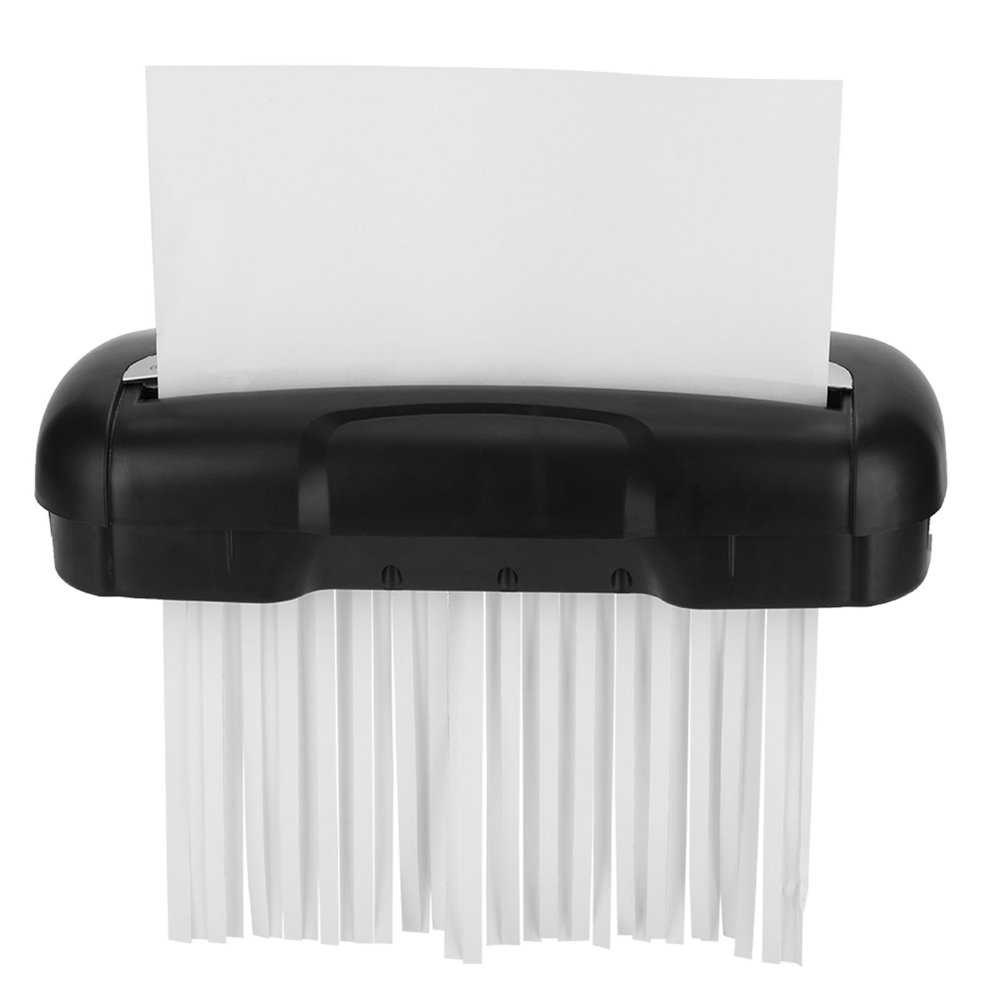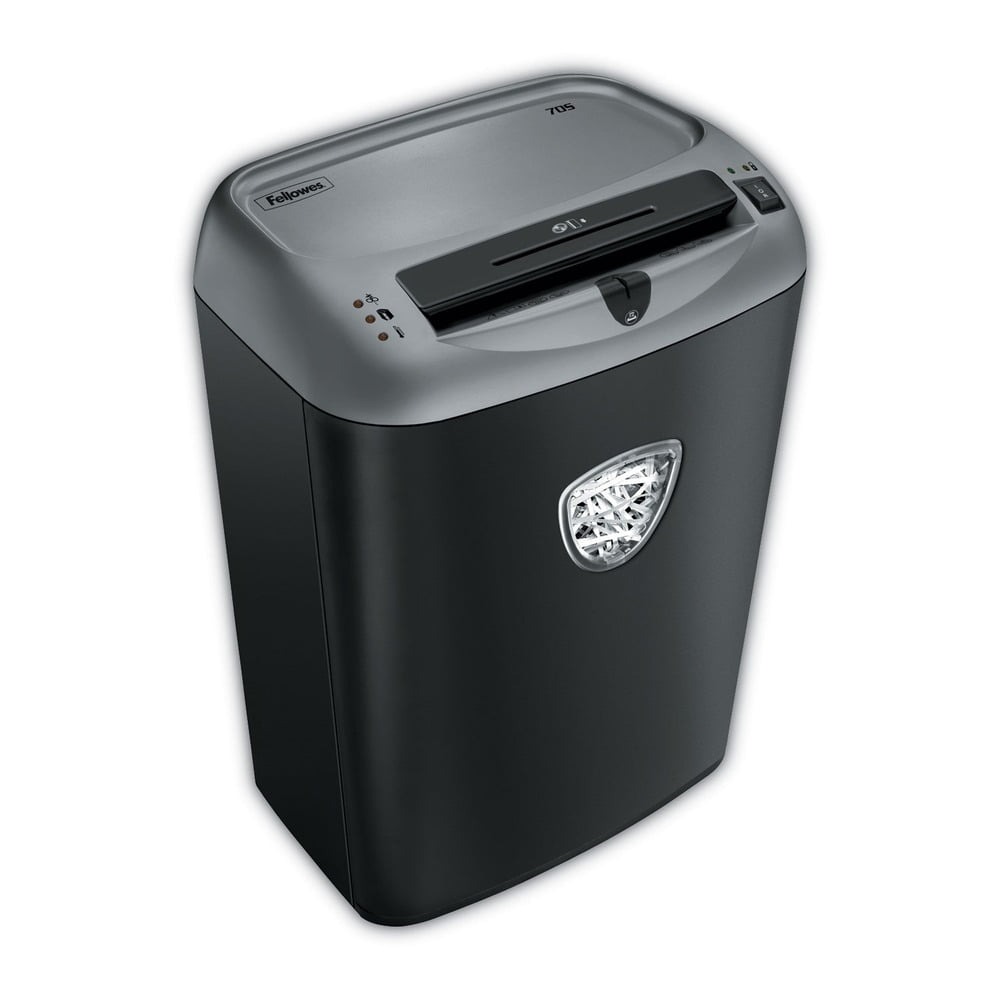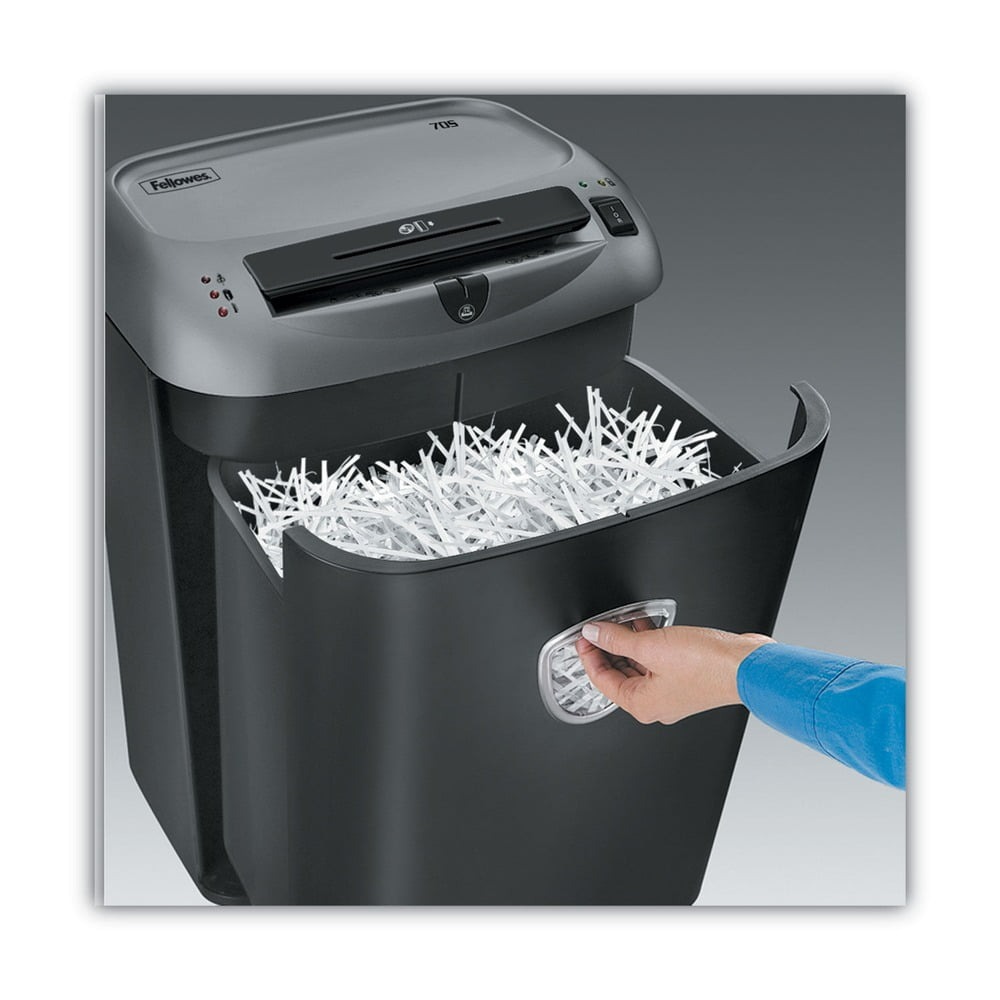Introduction to Strip Cut Shredders
Strip cut paper shredders slice documents into long, narrow strips. They stand as popular options for basic document disposal needs. The design is simple which often leads to fewer paper jams and easy operation. In home offices and small businesses, a strip cut paper shredder is a common sight. Before diving into maintenance, understanding how they work is crucial.
Strip cut shredders tend to be more affordable compared to cross-cut or micro-cut shredders. This is because they use fewer blades and simpler mechanics. They are best for shredding non-sensitive documents. However, they are not recommended for highly confidential materials. The security level is lower since the strips can be reconstructed with enough time and effort.
Users choose strip cut shredders for their speed and efficiency. They can handle higher volumes of paper at a faster rate. This is because the cutting mechanism doesn’t need as much precision as other shredders. If your shredding demands are high and the documents are of general confidentiality, these shredders might be ideal.
Overall, a strip cut paper shredder is a good balance between cost, maintenance, and performance for everyday shredding tasks. When selecting a shredder of this type, consider aspects such as sheet capacity, speed, and the size of the waste bin. In the upcoming sections, we will guide you through key tips to maintain and maximize your strip cut paper shredder’s performance.

Selecting the Right Strip Cut Shredder for Your Needs
Choosing the correct strip cut paper shredder matches your needs to its features. Consider the following factors before making a purchase. First, evaluate the volume of paper you plan to shred regularly. Larger offices might need a shredder with a high sheet capacity. Next, think about shredding speed. If you need to destroy paperwork quickly, opt for one with a faster shredding rate.
Look at the size of the waste bin. A larger bin means less frequent emptying. This is key for high-usage environments. Also, weigh the shredder’s size and mobility. Can it fit comfortably in your designated space? Is it easy to move around if needed? These questions are essential when selecting a shredder.
Another point is additional features. Some models handle staples or credit cards, which can be very useful. Noise level is also something to consider. A quieter operation is often preferred in shared workspaces.
Lastly, reflect on the level of security you require. Strip cut shredders offer basic security. They are not suited for very sensitive documents. For such material, cross-cut or micro-cut shredders are better. Ensure the strip cut paper shredder you choose aligns with your security needs.
By considering these factors, you can select the best strip cut paper shredder for your office or home use. This ensures you get a machine that meets your shredding demands while staying within your budget.
Essential Maintenance Tips for Strip Cut Shredders
Maintaining your strip cut paper shredder is crucial for its longevity and performance. Proper care can prevent most common issues that users encounter. Here’s how you can keep your shredder in top condition:
- Regularly Empty the Bin: Do not wait for the bin to overflow. Regular emptying keeps your shredder running smoothly. It also reduces the risk of jams. Aim to empty the shredder bin when it reaches three-quarters full.
- Clean the Blades: After emptying the bin, take some time to clean the blades. You can use a soft cloth or brush to remove paper dust and debris. This will help maintain cutting efficiency.
- Oil Regularly: Shredders need lubrication to function well. Apply shredder oil directly onto the blades or use pre-lubricated sheets. Oiling should be done every time you empty the bin or after extensive use.
- Avoid Overloading: Respect your shredder’s sheet capacity. Feeding too many sheets at once can cause a jam. It also wears out the motor.
- Use the Right Materials: Only shred items your strip cut paper shredder is designed to handle. Avoid inserting materials like plastic or metal unless your model specifies it can manage them.
- Check for Objects: Before shredding, remove any objects from the pages that can cause damage. Staples and paper clips can dull the blades over time.
By following these essential maintenance tips, your strip cut paper shredder will serve you well for many years to come. Keeping it clean, well-lubricated, and free from overloading goes a long way in ensuring its effectiveness and durability.

Cleaning and Lubricating Your Shredder Properly
Keeping your strip cut paper shredder clean and well-lubricated is key to its performance. Cleaning removes build-up and helps avoid paper jams. Lubricating ensures the shredding mechanism runs smoothly. Here are steps to do both effectively.
- Turn Off the Shredder: Safety first. Always turn off and unplug your shredder before starting any maintenance.
- Use a Soft Cloth for Cleaning: Gently wipe the blades with a cloth to remove dust and debris. Do this carefully to avoid injury.
- Apply Shredder Oil: Directly apply the oil across the blades, or use lubricant sheets, whichever is recommended for your specific shredder model. This should happen after cleaning or during regular intervals of intensive use.
- Run the Shredder in Reverse: After oiling, run the shredder in reverse for a short period. This helps to spread the lubricant evenly.
- Avoid Sprays or Harsh Chemicals: Never use aerosol sprays or harsh cleaning agents. They can harm the shredder’s internal components.
- Regular Lubrication Schedule: Establish a regular oiling routine. Mark it on your calendar as a reminder. Frequency can vary based on usage.
Following these steps, your strip cut paper shredder will continue to cut cleanly and run without unnecessary noise or friction. Regular maintenance avoids problems and extends the life of your shredder.
Troubleshooting Common Strip Cut Shredder Problems
Even the best-maintained strip cut paper shredders can run into issues. Below are common problems and how to fix them.
- Shredder Not Starting: Check if it’s plugged in and the power switch is on. Sometimes, the outlet may be faulty. Try a different one. Check if the shredder’s safety features are not activated, preventing it to start.
- Paper Jams: If paper gets stuck, turn off the shredder. Unplug it for safety. Remove excess paper gently from the blades. Cutters could be dirty and cause jams. Clean them following the tips we shared earlier.
- Overheating: Shredders can overheat with heavy use. If it shuts off, let it cool. Most have a feature that turns them off when too hot. Always allow your shredder to rest after extended use.
- Unusual Noise: A shredder should not be too loud. If it is, check for obstructions. Make sure the shredder is lubricated well. It might need more frequent oiling.
- Poor Shredding Performance: When a shredder doesn’t cut well, blades might be dull. Regular lubrication helps maintain sharpness. If performance does not improve, it may be time to have the blades sharpened professionally.
When you keep up with maintenance and know how to handle these issues, your strip cut paper shredder will be reliable and continue to serve your shredding needs efficiently.
Safeguarding Your Shredder Against Jamming
To keep your strip cut paper shredder running without hitches, preventing jams is essential. Here are steps to minimize the risk of paper jams, which can be frustrating and time-consuming.
- Avoid feeding in too many sheets: Stick to the recommended sheet capacity of your shredder. Overloading can lead to jams.
- Remove staples and paper clips: These metal items can snag on the blades. Always check documents before shredding.
- Straighten paper before shredding: Align pages neatly. This helps them feed into the shredder evenly.
- Use shredder oil: Regular lubrication keeps the shredder’s blades moving smoothly, reducing jamming risk.
- Run the shredder at the right speed: Don’t rush it. Allow the machine to take its time to shred properly.
- Alternate between forward and reverse: If you sense a jam, using the reverse function can help clear the path.
- Keep the shredder clean: Follow cleaning routines. A clean shredder is less likely to experience jams.
By implementing these strategies, you safeguard your strip cut paper shredder from common jamming problems and ensure it remains in optimal working condition.

The Importance of Regularly Sharpening Shredder Blades
Keeping your strip cut paper shredder’s blades sharp is a crucial aspect of maintenance. Sharp blades enable your shredder to cut efficiently and quickly. Dull blades can lead to numerous problems, including more frequent jams, reduced performance, and extra strain on the shredder’s motor. Regular sharpening ensures that your shredder operates at optimum levels and prolongs its lifespan.
Here’s why you should keep the blades of your strip cut paper shredder sharp:
- Prevents Jams: Dull blades struggle to cut through paper. This can cause paper to get stuck and jam your shredder.
- Enhances Performance: Sharp blades cut cleanly and smoothly, maintaining the shredder’s speed and efficiency.
- Saves Time: When blades are sharp, shredding is quicker. You won’t waste time fixing jams or running the shredder longer to do its job.
- Reduces Wear: Keeping blades sharp puts less stress on the shredder’s motor. This can prevent expensive repairs or the need to replace the unit.
To maintain sharpness, have your blades professionally sharpened according to the manufacturer’s recommendations. For most users, this might not be more than once a year, but for heavy use, you may need to do it more often. Always check the user’s manual for specific guidance for your model.
Remember, a little attention to the condition of your shredder blades can save you time and money in the long run. Regular checks and maintenance help keep your strip cut paper shredder in perfect working condition.
Disposal of Shredded Material: Best Practices
After you shred paper with a strip cut paper shredder, disposing of the material properly is key. Here are best practices to ensure that your shredded documents are dealt with in a secure and environmentally responsible way:
- Recycle When Possible: Shredded paper is often recyclable. Check with your local recycling center to confirm they accept shredded material. If they do, bag the shreds separately from other recyclables.
- Consider Composting: For non-sensitive documents, consider composting. Shredded paper can help with aeration and moisture retention in compost bins. Only do this if the shreds are free of ink harmful to the environment.
- Secure Bags Before Disposal: When throwing away shredded paper, use opaque or marked bags. This keeps the contents hidden and informs sanitation workers of the material type.
- Use for Packaging: Reuse shredded paper as packing material. It can cushion items safely for shipping or storage.
- Keep Shreds for Bedding: If you have pets, shredded paper can make for good bedding. Ensure it’s ink-free and safe for animals first.
- Destroy Completely If Needed: Some documents may be too confidential for regular disposal. In these cases, consider a destruction service. They turn shreds into pulp, guaranteeing confidentiality.
Dispose of your strip cut paper shredder’s waste properly. It protects your info and helps the environment. Always follow your area’s guidelines for waste disposal to stay responsible and secure.
